The Nikon V1 in Vietnam by Colin Steel
See his blog HERE and his past report with the V1 HERE
Part 1 – The V1 Vietnam Experience
Hey fellow photo travel folks, I just got back today from a five-day trip to Central Vietnam with my good mates Melvin & Adrian from Singapore Trekkers and I wanted to share some photos and early thoughts on both the locations and the equipment I used. As someone who was brought up during the Vietnam war, I have vivid memories of the nightly news reports, the protests, the music and the horror of what seemed at the time like a never ending drama. I was also immersed in the cultural events that followed it through the many movies that it spawned, Apocalypse Now, Platoon etc. For that reason the country has always held a certain fascination for me and many of the place names conjured up memories from newsreels, movies, photos and newspaper articles; China Beach, Red Beach, Hue, Da Nang and so on. I have visited the country many times before but mainly in the North and have only visited the South a couple of times so I decided to put that right on this trip which centered on two main locations; the ancient capital of Hue and the trading port of Hoi An.
These two locations are very different with Hue having been the scene of a major battle in the Tet offensive and Hoi An being a Unesco preservation site and very unique historical location. Unfortunately, as a result of the conflict at Hue much of the ancient city was destroyed however its still possible to visit the remaining parts of the Citadel and Khai Dinh’s tomb. Hoi An on the other hand has a small but nicely preserved old town and a lovely traditional market which is fresh with smell of herbs and flowers if you go early in the morning (and of course the stink of fish) It’s great to go before the sun comes up as you will catch the towns people awakening and starting their day.
[ad#Adsense Blog Sq Embed Image]
Interestingly, I found the people in Central Vietnam and Hoi An in particular to be more friendly to photographers and, as usual, you just need to buy some fruit or a little craft and they will be very happy for you to shoot away. I bought some delicious fruit from the lady below for around 50 cents and we had a good laugh together at the staged model shoot that was going on across the road into the bargain.
So lets have a look at the photographic and travel experience with some comments on the V1 kit thrown in. As you will recall from my travel prep post for this trip, I decided to take the smallest and lightest kit I have which consists of the Nikon V1, 10, 10-30, 30-110 lenses and the little flash unit. I did cheat though and also took the FT1 adaptor and my favorite Nikkor 50 mm f1.4 which becomes a very handy, fast portrait lens on the V1’s 2.7 crop sensor and, although I didn’t use it much, the results are rather nice as seen in the opening shot above. Incidentally, all of the photos used on here were processed on the fly using the amazing little Nik Snapseed App as I have never bothered to learn photoshop and have a strong aversion to sitting behind a screen editing photos. I love the simplicity of the app and its lightening quick in use on an ipad, its a perfect match for lightweight travel use.
The V1 in Use
Make no mistake, this is not a D3 (maybe that should be D4 or D800) replacement but it is a damn fine little camera which is capable of extremely good results if you watch out for a couple of handling quirks and employ good camera handling craft. Let’s look at its so-called Achilles heel; its small sensor and low light capabilities.
Much has been made of the limitations of this sensor and of course the files from it wont stand up against the pro body D3 ones for example but for me much of this argument depends on what you want to do with the photos you take. For example, most of my photos end up on the internet on this blog and I very rarely print bigger than A3 and more usually at A4 size. The V1 is fine for this kind of use.
I shot the photos in this sequence inside the magnificent Marble Mountain shrine near Hoi An. This is a huge cavern which, at around 10:30 to 11 a.m. has some fantastic shafts of light that enter through three or four holes in the upper part of the cave. About half way up the cave wall there is a large Buddha carving and there are several little arched shrines on the floor level. I have been here before and the trick is to wait for a local worshiper to come in for prayer as they will light some incense sticks as part of their prayer ritual and, as we all know, shafts of light and smoke makes for intriguing photo possibilities. The nun praying above was an added bonus, she was visiting with friends and in return for some Polaroid snaps was delighted to pose praying in one of the shafts of light. These are great little photographic moments that can’t be planned and are all the better for that.
I took the shot below from over the shoulder of one of the guardian statues at the entrance to try to give a better perspective on what the overall scene looks like. You can see quite clearly how the shafts come down across the Buddha and in front of the little shrine where the devotees will pray.
All of the shots from the cavern are taken with the tiny 10 mm lens which has become a firm favorite of mine on the V1. It’s currently the fastest Nikon 1 system Lens at f2.8 and although that’s not exactly a light gatherer, it works well enough wide open and, coupled with the lack of mirror movement, its possible to use at very low shutter speeds and I think most of this sequence were shot at around ISO 800 as a result. The key to this kind of shooting is to get the camera steady through controlled breathing, a light but firm hold with the viewfinder against your eye and snapping of a short burst of 5-6 shots which is where the V1 excels with its rapid shooting capabilities. As I said, have no fear of the f2.8 aperture as its sharp wide open and this is where one of the other V1 criticisms’ actually becomes a benefit, the DoF effect of the small sensor will work in your favor.
I particularly like the negative, black space in this photograph of the nun because of the way it isolates the subject. I wasn’t able to get the shafts of light right but the exposure is pretty good on the skin considering the harsh contrast and the dappled shadows work rather well. The V1 meter also did a decent job on this but I added around 0.7 negative compensation which also helped with keeping the shot sharp and maintained the features.
Here’s a final low light shot taken at the Thu Bon riverside in Hoi An. Hoi An is famous for its lanterns and they are made locally in the shops in the old town. Given this theme, little kids have a thriving industry selling little paper candle lanterns that are designed to be floated down the Thu Bon accompanied by a wish. The kids are charming and its hard to resist the exchange of spending 50 cents in return for a photo. The fun of it is that another bunch of kids wait a little downriver to snatch the lanterns out for recycling and resale !! You will no doubt notice that this photo is a bit more colorful, this is nothing to do with the V1, it’s simply that I liked the desaturated look for the low light cavern and early morning shots, just my choice I am afraid 🙂
Here’s a more colorful reflection shot to balance things up. This is taken at the small stream that flows under the Japanese bridge in the town centre. The bridge is nice but tricky to photograph as it generally has a large number of tourists on it. One thing to watch out for with Snapseed is that it can start to introduce noise in certain situations and I can certainly see it creeping in on the bottom right of this shot. This is nothing to do with the V1 sensor and this kind of shot would have been better dealt with in Lightroom or a similar more powerful editing software.
I mentioned some of the V1’s handling quirks and I explored a few of them with some suggested fixes in my Myanmar part 2 blog posting. One more worrying one that I have now found very irritating is the tendency for the small aperture adjustment lever/button to change to smaller apertures due to the holding point for your thumb. The button works by shutting down aperture with an upward push and its pretty sensitive. The effect is that while shooting your thumb pressure on the grip will move the button enough to inadvertently shut the lens down on you and this is fatal in the kind of low light shooting situations I mentioned above. There is no fix for this and you just need to be very vigilant, I found myself shooting at f 16 a couple of times and had no idea what had happened. To be honest, this is not good enough and its pretty ridiculous that you have to be sticking gaffer tape on a camera anyway. Nikon have been in the game long enough to know how to design a camera decently and I am afraid it doesn’t show in some of the design characteristics of the V1. The aperture issue was pointed out by nearly every reviewer of the camera and it makes you wonder how it was use tested before launch.
Having got that gripe out of the way lets finish up this first part of the post on a more positive note. Here is a very nice portrait taken in the Citadel at Hue, I really like the way the V1 captured the light and colors.
Well that’s it for this taster on Central Vietnam, I have been traveling all day and am pretty much out of it now. Stay tuned over the next few days and I will post a further series of articles on this trip including a more specific look at Hue and Hoi An locations including some of the many fishing villages along the Thu Bon river.
Colin Steele – See his blog HERE

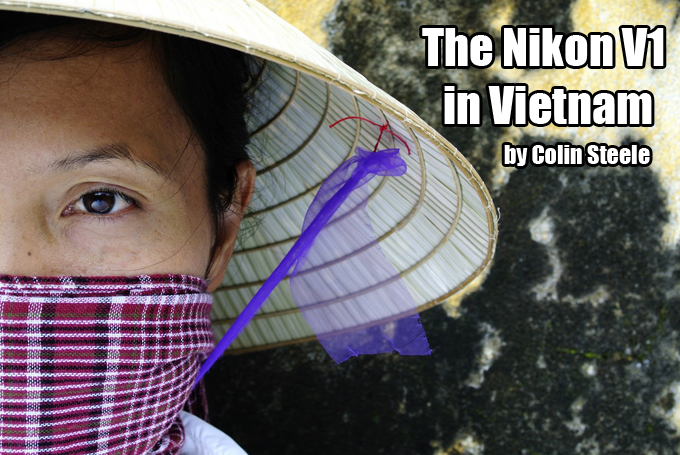


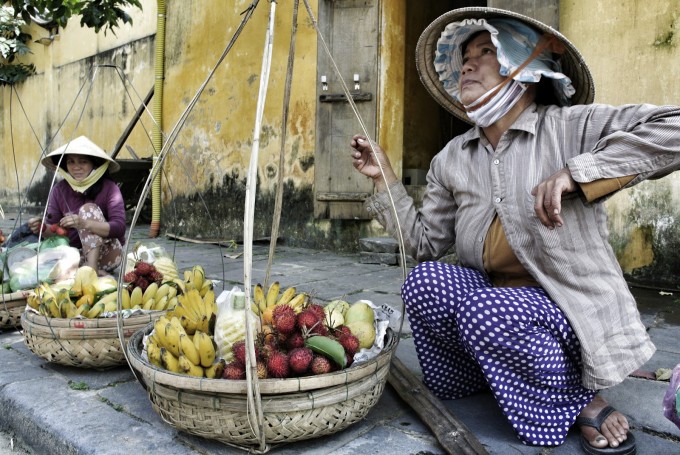
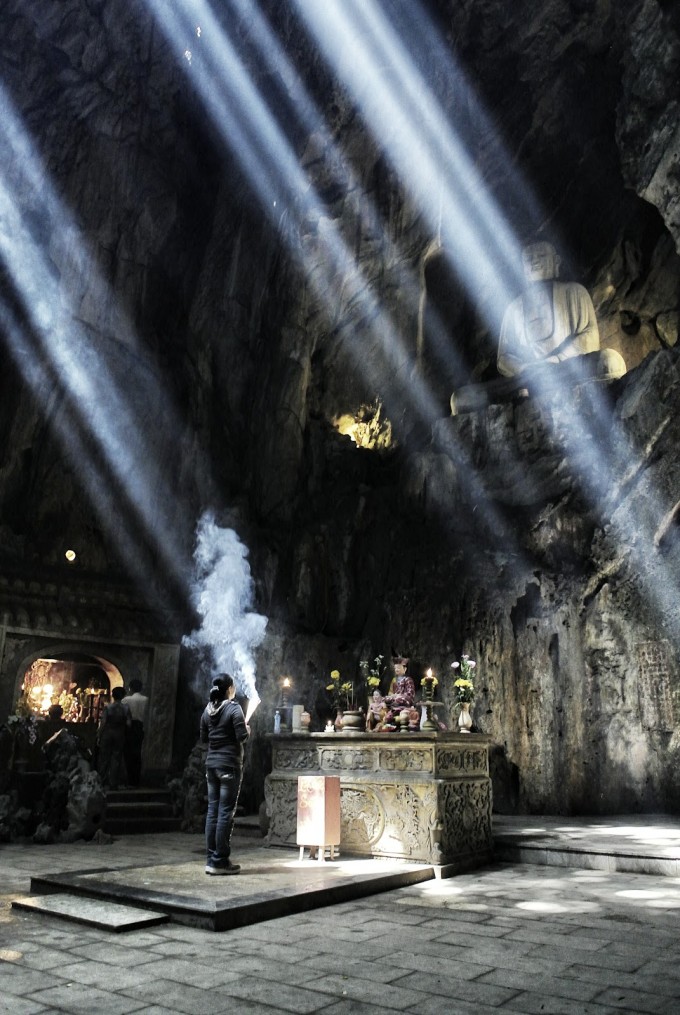
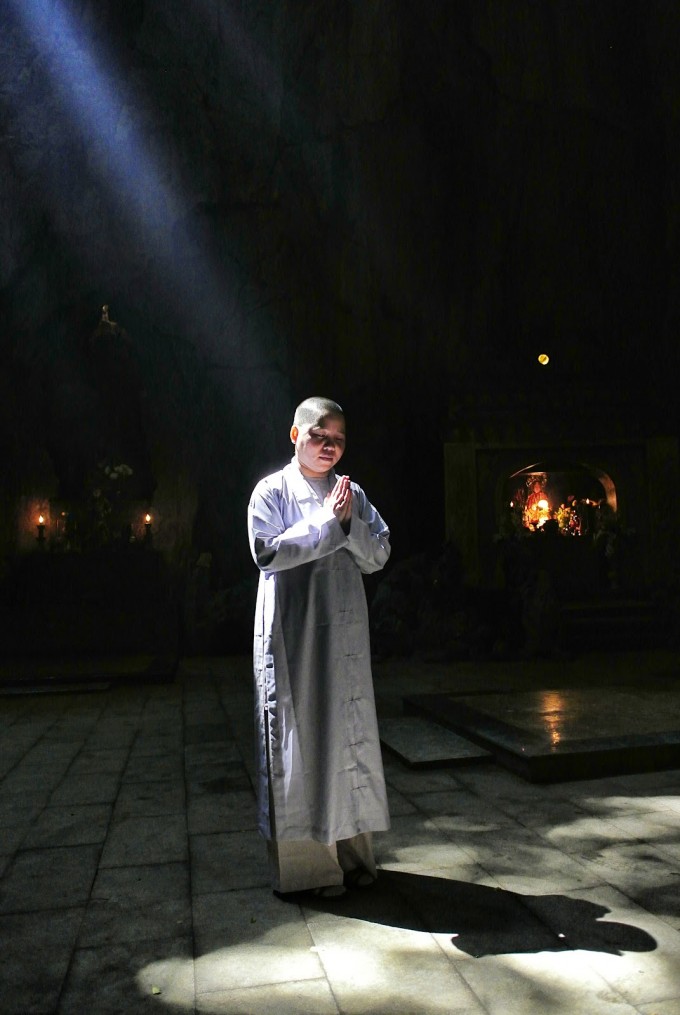

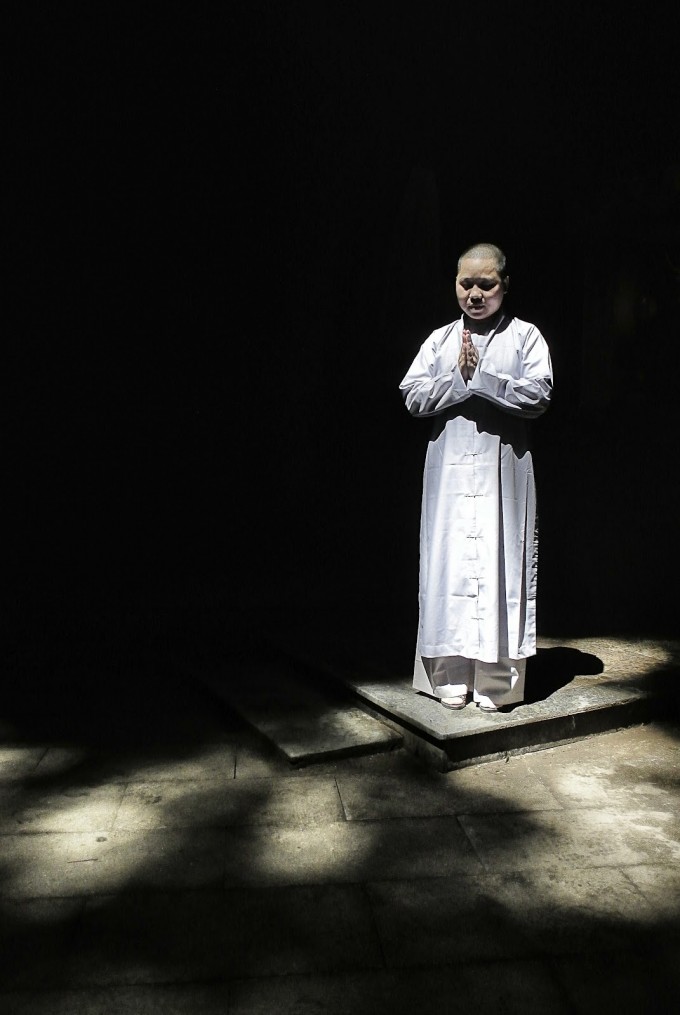
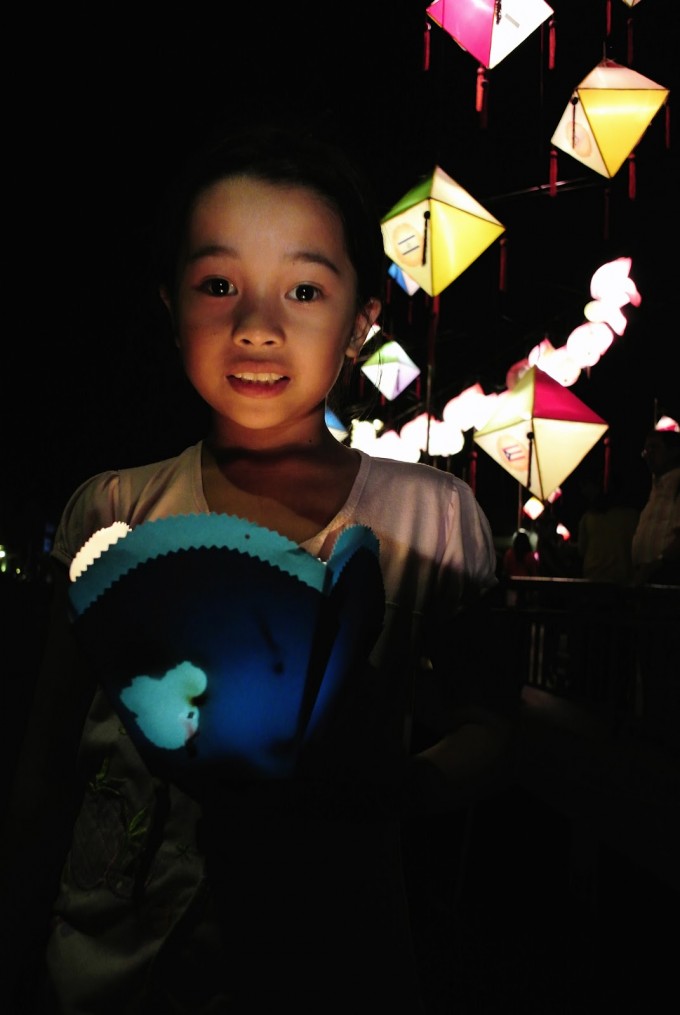


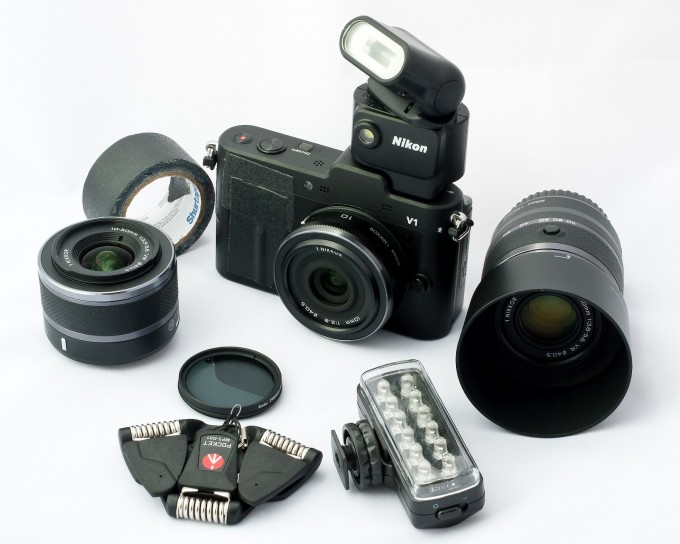


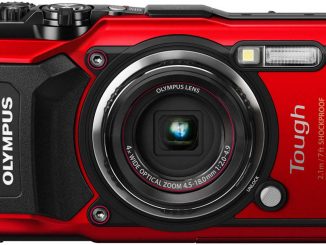
Excellent pix! I’m always surprised at how quickly I end up enjoying the pictures and have forgotten about what they were taken with. About 6 months ago, I turned a corner. I was looking at the pictures in several books by famous (and favourite) photographers, and realized most of them weren’t perfectly sharp, and the DOF was maybe not what I would have done. But, I loved the pictures. At that point, I decided to worry less about image quality and more about quality images.
When’s the last time somebody looked at one of your better pix and said, “Ah, you’ve rendered it with perfect sharpness, must be a full frame sensor, and the lens signature…….?
These pictures are great, period.
just got back fron Vietnam,
i loved the country and i loved your pics
suprb set! My fav is no. 3 for sure! You captured that light, mood atmosphere! Nice!
When you have shots that look like this what else we want to talk about? Your photography is at the best. Than comes V1 that enable one to take good photographs. I have a V1 and I know what you are talking about. I love the V1 very much. Hope Nikon comes out with more better small lens. Thanks for sharing your lovely photos. Will come back to see more of it.
Hm.. to many blown highlights… Are you shooting Nef and expose for the highlights? I almost never get blown highlights with my J1… But then I accept a little more noise of course.. I always have it set to exposure compensation -0,7 except for when shooting when its dark, then +-0.
Thanks Kim seng, I think Part 2 should be on Steve’s site within the next day or 2.
Cheers,
Colin
Hi Danonino, the shots on this post were mainly edited in Snapseed as I was trying this out as a travel kit. I do shoot raw as well but can only load the jpg’s onto the ipad. In the cavern shots, had I exposed for the highlights (white light basicaly and pretty much impossible to expose anyway) the rest of the subect and the cave would have been pitch black. I shot in that cavern before with a D300 and its a trade off. The highlights are also a bit of a trade off for the dramatic tone effect that Snapseed gives which I felt suited these shots. I am not keen to underexpose with the V1 either as the raw files are very lightweight and for my style I find it easier to bring in blacks as I dont worry about shadow detail. You see some of this in this little post I did yesterday with Lightroom edited files:
http://phototravelasia.blogspot.com/2012/02/v1-working-scene.html
As with everything, its what works for you and creates an interesting image that reflects what your after. It’s good that you have found a method that works for what you shoot, they are great little cameras aren’t they? By the way, do you find the lack of viewfinder any limitation? I wasn’t sure anbout this and find I use the V1 vf a lot.
Thanks for looking and commenting,
Colin
I’ll keep my ears open. I keep getting stymied by the time difference but am aiming to discuss various bounce and diffusion options with Gary Fong rather than go off camera.
Not related, but I’m just wondering just what one would want to photograph at the V1’s amazing 1/16,000 sec!
Thanks for another nice review Colin. I’m delighted you bought the flash; how are you finding it? I’m loving my V1 more and more and setting S-priority has solved the major problem in use as you describe.
I think the look of these files is not as good as you have posted before. The colour is indeed a little flatter but also look under sharpened to my eyes. I haven’t used Snapseed; is sharpening well sorted on that app?
The depth of field comments make me laugh. There’s plenty of “bokeh” in all the shots that need it. Only the first picture could have been taken with a point-and-shoot, I suggest.
I had a quick flip through a couple of Steve McCurry’s books and there is no discernible bokeh in any one of the majority of his shots! (I’m not talking about portraits)
I asked about the depth of field difference in a couple of his portraits and his answer was (paraphrased) 1. I do not think about d.o.f 2. The camera is on full auto; if there’s more d.o.f it’s because it chose a larger aperture.
In fact some of his older film-shot pictures DO have some out-of-focus elements. He was adamant that those shots would look very different with the higher iso of his digital cameras. As a fellow M9 user, I think we have been somewhat seduced into thinking massive bokeh is important. I’m stopping down my 35 summilux much more now and I find shooting with the V1’s greater depth somewhat relaxing. Of course it’s not the same, but crikey, there are so many more situations where the V1 works brilliantly where the M9 would be left seriously wanting. They are just tools.
I’d love you to process some of those RAWs from Vietnam differently and see how much better they could get. Again, thank you and another place I’ll be going this year! (with M9 as well as V1!)
I totally agree !
Many think that creative photography means shallow depth of field.
What about Brassai, one of my favorite photographer during the 50’s ? Was he shootong wide open ? What about James Nachtwey ?
People are focussed on bokeh and no more on framing.
Take a look on Flicker, if you want lots of comments, just post a stupid photo with massive bokeh and you’re done…
Absolutely true. Flickr is, for the most, for enthusiasts who can’t get enough of massive, beautiful bokeh and I’m sure all their family members and friends love it.
Agree. DOF i overrated. Period.
Well shallow DOF ..he..he
Hi Jon,
Many thanks for your encouragement. On the Snapseed thing, I admit to being colour blind but when I look at the shots direct from the blog on my colour balanced mac or Ipad they look fine and the snapseed drama tone does what I wanted. I do think they have lost something in the transfer and definately look a bit flatter. I will have a go at the raw files in Lightroom as you ask and will put them in Part 3 (planning 3 parts for this blog) which I should complete over the weekend.
I honestly didn’t get to use the flash as much as I wanted Jon but have a few that I can post. I did do some shooting with it localy in Singapore though and got some really nice results, the skin tones were very nice. I would like to get a little cord to get it off cam though so if you see or hear of one could you let me know please?
I admit to being a bit lost with the DoF discussion, I would class myself as a ‘context’ shooter and like to show something of the environment around my subject so the lack of DoF control doesn’t phase me and I also know that if I put the 50mm F1.4 AF-S Nikkor on I have shallow DoF and bokeh coming out of my ears !!!!! I guess that at some point Nikon will bring out some faster lenses that will help in that respect. For my personal taste and style though, faster glass is for lower light, and not so much for DoF effect – just the way I see things I think.
Cheers,
Colin
You captured the essence of Vietnam very well, Colin. Great job and thanks for sharing.
Bravo Colin ! Great photos !
This proves one more time that the camera doesn’t make the photo, the photographer does.
You have “the eye”. Great framings and composition.
You would have done the same with a disposable camera.
To all of you that keep on changing cameras every two months : if you could only spend some time USING you cameras instead of collecting them…
@Kais, well spoken!
I’m so fed up reading replies of guys who are buying two cameras a month… Changing their gear like they change their underpants.
I’m not jealous in anyways : I could buy a S2 and a H4D and use them as paperweight. Do I need them ? Hell no. Would I use them everyday ? A big NO again !
I have a M9-P and a Ricoh GXR that I USE. Not as much as I’d like but I always have a camera in my bag. I live in Paris and this city is so inspiring.
There’s no perfect camera, only cameras that we have to get used to and S-H-O-O-T, not discussing sensor size or charts of DR on DxO.
My 2 cents only…
Absolutely right. But some of us have a hard time not discussing gear 🙂
It’s a man’s, man’s, man’s world. And a gear, gear, gear world. Many new cameras are celebrated as the next big thing. A pity.
Waw, Colin! Great great pictures. In every way. Again this is proof that it’s the photographer in the first place…
btw, great set Colin, enjoyable.
I don’t know if it’s only me, but i think the color looks way to dull even though the picture is interesting…the quality doesn’t differ that much with other high level digicam. IMHO.
That is a matter of taste.
You can tweek saturation, contrast, color for all the modes in-camera (standard, neutral, vivid, landscape etc.) or in post processing to your liking.
Take a look at some of Kirk Tucks shoots with the V1. They look completely different to those shown here. (http://visualsciencelab.blogspot.com/2011/10/nikon-1-counterintuitive-crazy-and.html).
Hi Vincent, you are right, that was me using the Snapseed app. I am pretty colour blind and get attracted to the desaturated images that you can get with the app. I also used the ‘drama tone 1’ setting because it helps bring out detail and worked with the smoke and light shafts. The trade off is that it somehow ‘flattens’ the image a bit and quite a few people commented on this also. Anders is right, its very easy to get very vivid and colourful shots straight from the camera using the modes. I just liked the way the images made me feel about the subjects and scenes and I also noted that they look better on my Ipad which is smaller and more vivd than when I view them on my non-color balanced work screen.
Anyway, thankd for looking at the article, I really do appreciate the input and diverse views from you guys.
Cheers,
Colin
okay that’s explained why the pictures lack punch in color…
oh and i already looked from your blog, the pictures looks amazing! i think it also has to do with the quality/compression.
Dear Colin,
congratulations with your very nice travel story and fantastic pictures.
I ‘m shooting the V1 and the two zoom lenses for a couple of months now and I am VERY pleased with this little and light speed-machine. Wherever I go, the V1 is with me. ALWAYS! Without exceptions. I love this camera.
I have this question: my local camera dealer told me no filters were available for the Nikon 1 system. But I see that you’re using e polarizer? What kind of polarizer is it and where could I buy it (in Europe)
Many thanks !
Kris
Don’t trust your local dealer 🙂
Bought Hoya HMC 40.5mm UV-filters on Ebay. Pretty good price as far as I remember.
Hi Kris, Anders is right. CP and UV filters are easily available in Singapore and mine is a Kenko and they are pretty cheap because of their small size. What perturbed me a little was that I can’t source a lens hood for the 10 or 10-30 lenses and the one that comes with the longer zoom is too deep. I would be very interested if anyone has managed to source a decent hood that works with these. FYI, the lenses are all the same filter size and so you only need one and this is a great benefit if you are travelling.
Cheers,
Colin
Hi Colin,
your ‘minimalistic’, but beautifully done travel reports should be the final argument to forget pixel counts, sensor sizes, compulsive EXIF peeping etc. and instead purely enjoy the mood and the soul of Asia emanating from your pix.
So I’m even more happily looking forward to two weeks trekking in the Nepal Himalaya in March and, of course, this time, the V1 will came with me (together with the GH2).
Besides, above 5000m, the firm belief that serious work can be done no other than with FF requires as much physical as psychological effort from the “sensor size religious” 😉
For lens hoods, try JJC products (http://www.jjc.cc/index.asp) – should be easily available in Asia; just received their plastic lens hood for the 10-30 (snap type) and sturdy screw mount metal hood for the 10mm.
Both fit perfectly.
So, thanks again for your beautiful pix & looking forward to further work.
Greetings, Michael
Hey Michael,
Many thanks for this, these hoods would be a god-send for me. I dont like to put uv or protective filters on lenses and the glass is a little bit exposed on the 1 system lenses.
Can’t wait to see your Nepal shots, can you send me a link when you get back? I am considering a trip to Tibet in June and it would be a complete change of scene for me. I agree with you that the V1 would be a perfect trekking camera, you might want to have a look at the tiny Manfrotto pocket tripod as well, then you can have a good laugh at all of the guys lugging camera kit 🙂
Thanks also for your refreshing take on why I do this, I admit to being a bit of a camera junkie, its my passiona and hobby but these posts are not about the camera in that sense. For me the V1 bit is about it being a small, rugged tool to express how I see Asia.
Thanks again and happy travelling,
Colin
Crikey, maybe that’s been my problem Colin. I put “protective” filters on both lenses and have had more flares than a North Sea oil rig.
I’ll take Michael’s tip gratefully.
And to finish with: Sam Haskins went to a dinner party and the host said “love your photos; you must have a really expensive camera”
He left the dinner and thanked his host for a great dinner. “You must have a very expensive stove”
Nice pics, but the V1, honestly, is a waste of money IMO. I know Steve loves to use it, but I can’t figure out why. The same goes for new OM-D, with that tiny micro 4/3 sensor. I’ve been trying to understand why you would pay $1000 or more for cameras this restricted. Maybe one day I’ll figure it out. Or perhaps I’m just spoiled with my M9-P. I seriously don’t know. But, hey, your Vietnam shots turned out nice, so who cares?
“so who cares”………exactly, lets take photos with what we have got 🙂
Why don’t you just enjoy the pictures? It is a free world and nobody asked you to buy the V1.
Do you really have an M9? If so, you’d understand that it’s among the “most restricted cameras” (to use your words) money can buy. I love mine nevertheless, but the M it’s not a versatile system, particularly not when compared to mft and even the Nikon V1.
Ah, I didn’t express myself correctly. I didn’t mean restricted as in the 100+ options of the V1, X”Pro”1, OM-D, etc. I meant IQ. The restriction of that is just too big for me. I’m just not into auto this, auto that, video, etc. Yes, call me old-fashioned… One day I hope to find out what is so good about all these other options for cameras. Until then, it’s M9-P with Summicron 35 and Summarit 75 for me. Sorry guys. No offense…
Don’t worry 🙂
I’d rather have a V1 two lens kit with money left over for 3 fresh water wells in underdeveloped areas of the globe… my pictures/income level aren’t good enough to warrant $10,000 worth of camera gear–and I sure as heck wouldn’t travel into a community (Vietnam) to take pictures of them with gear worth what 10 of their citizens make in a year. I’d rather travel and make a difference while I’m there.
Frankly, if you cannot take good images with a v1, you’re the “restriction,” not the camera.
If size and weight are important, then the Nikon 1 and Micro 4/3 systems are a sensible compromise. In many circumstances the images produced by the smaller sensors of these systems are good enough for most needs. The question can be turned around; why carry a ton of huge equipment if you can satisfactory results with much smaller and lighter gear? The Nikon 1 are not perfect camera’s. No camera is. Not even the best and most expensive medium format, DLSR or rangefinder camera is suited for every situation.
Nice shots but this camera is over-hyped. The hot-shoe cover constantly falls off, the mode dial turns far too easily, the sensor has real limitations and as you say the aperture button is easily shifted. Whatever you think of the output this is badly designed and over-priced.
Hi Andrew, I agree with you on the phsical design limitations and I too find it astonishing that a new camera like this should have such design flaws. I mentioned these in previous blogs and had to stick tape on !!!! I bought mine in Singapore and to be honest thought it was a reasonable deal at S$1100 for the two lens kit. This is pretty much in line with the Lumix and and Olympus competition and they are all decent usable cameras. I think at the end of the day any camera is a set of trade offs against IQ, size, usability etc and the only point I am trying to make is that this little camera can work well as a travel companion and produce decent quality shots (as can most cameras nowadays to be honest)
Thanks again for looking and taking the time to comment,
Cheers,
Colin
This article is certainly a great advertisement for the new Nikon system, but honestly, I think they say more about the photographer than the equipment. Thanks for sharing. Gorgeous work.
Some nice work with a camera thats apparently struggling to find it’s place in an already crowded market. Thanks Colin
Adding to that, you have a great eye and attention to exposure. Nice work on the blog too – keep up the great work
Couldn’t resist looking at your gallery – awsome.
really great pictures ! very cinematic !
(Oops hit submit too fast)
And the dead silent shutter (on Electronic shutter mode) is just great to use and I imagine extremely good when shooting in the areas that you did where a DSLR click clack noise would have been very noticeable. Great photos and hope you submit more on future adventures!
Yep James, it really is an unobtrusive and silent operator and as you rightly point out, that is highly desirable in religious sites.
I am really glad you liked this stuff, I have enough for a few more posts on Vietnam and will probably get them up over the weekend.
Thanks again,
Colin
Great shots. I love my V1 and glad to see it getting more respect. Tech nerds will complain about its sensor but if you ever shoot with it, you’ll know how good of a camera it is 🙂 Speed and processing capabilities are outstanding!
Great, great images. Goes to show that shallow dof isn’t everything, but the eye of the photographer is.
Beautiful!
Not saying anything about the composition, etc, but I find that the V1 shots in general all have that point and shoot type look. Big DOF, etc.
Jonny, what do you mean as “point and shoot type look”? Big DOF and what?
Shallow DOF is special effect not always desirable. There are so many famous photographs of old masters with deep DOF which definitely are not P&S.
Same here. I find the images to have that P&S look, with the exception of the Marble Mountain images. And I also agree that it has more to do with Mr. Steel’s great photographic skills, and not the ‘goodness’ of the V1. Looking forward to more Vietnam images, Mr. Steel. 😉
Hi Jonny, thanks for looking and sending your comments. I am interested in the DoF view that you raise which is a good one, like everyone I also like to take shallow perspective shots to highlight a subject. The V1 wont do this with the 1 system lenses but I have taken some shots with the 50 mm F1.4 Af-s lens that I have using the FT1 adaptor and its all there, the Bokeh is great and its a nice portrait length. I dont think it makes sense though to use the lenses in this way, they belong on the cameras they work best on. For me the V1 is a point and shoot but one that delivers reasonable quality and its a nice, tough and portable travel proposition. That is really where I am coming from with it and it also worth remembering that I processed these in a $5 app which, although it gives some pleasing effects that I like, does appear to rob some depth from the shots.
I really appreciate you guys taking the time to look and share your views, its what makes this interesting. Finally Jonny, I will have a look at editing a few of the shots in Lightroom and see how they look there.
Cheers guys,
Colin
Love the pictures. I have only been to Vietnam once back in 2001, but it was back before I could afford to buy a nice camera to take in all of the beautiful scenery.
Hi Tony, many thanks. Sounds like a good reason for you to go back again 🙂
Cheers,
Colin
Hi Colin,
I’m very pleased about your experience with this small thing!
Like you, I work with the bigger brothers D3/D700 and I’m accustomed to use high ISO in dark room situation.
I bought this little V1 and find often, that the result in high ISO a bad and blurry, also when using aperture 2,8 and shutter speed 20-40 without flash!
I love to learn more and maybe I do something wrong, without knowing what 😉
Could you help me…? 😉
When I see your photos I’m exited!
Motives and quality are fantastic.
Has I understand you right, that you often make this photos right of your hand without tripod?
I’m also interested to know which shutter speed you are using. I know it’s work but if you wrote the EXIF-data under your photos, everyone can read this.
Hope to hear from you and greetings from Germany.
Alan
Hi Alan,
Thanks for taking the time to look and comment.
In thinking about your comment I am assuming that its the subjects that are blurry as 1/20 to 1/40 is too slow to freeze movement. I think you need to look at your ISO and get the shutter speed up. I often set the ISO on auto at the max limit (3200) and by doing so I create some headroom. What you need to watch though is that the camera will try to offer shutter speeds that are around 1/40 or 1/50 before it bumps the ISO up. The other alternative when you have movement is to use shutter priority with the auto ISO and set at a minimum of 1/100 and see how you get on with that. My final comment would be to watch your shooting style and if the light is low press the viewfinder to your face for stabilisation – don’t use the rear screen as you wont be as stable. I also brace myself quite strongly and shoot bursts if I think there might be a risk of shake. The good news is that the problem you mention is nothing to do with the camera, you would have that issue with any camera and it would be worse with DSLR’s because of their mirrors.
I nearly always hand hold and only occassionaly use the little Manfrotto pocket tripod that I mention in the trip prep blog. I would need to check but the cavern shots were pretty slow shutter speeds because I was able to brace myself, shoot bursts with my breathing and most importantly – the subjects were completely static and in fact almost frozen so that helped a lot.
I hope this helps you, give it a try and let me know how you get on.
Thanks again,
Colin
Hi Colin.
Very fines shoots. The V1 certainly gives a lot of value for money with the right person behind the lens 🙂
I would recommend anyone taking a trip to Vietnam. Went some years ago and the people I meet in Hanoi and cities in the northern part of the country, including small villages close to the chinese border were very friendly and most of them did not mind being photographed.
Cost of living is very low, the food is healthy and tasty (never saw one single fat vietnamese) and there is plenty to see.
NOTE: I think there are some duplicate text and 1 or 2 images that are doublets as well?
Hi Anders, thanks for looking and commenting.
I am glad you had a chance to visit and you are right its a very diverse country that requires you to get off into the villages if you can.
Also agree about the food which is excellent and very cheap as you point out. Because of the French influence its possible to get lovely sticks of bread, chocolate cake and delicious coffee as well !!! Maybe that’s what marks we foriegners out as a bit more ‘chunky’ 🙂
Thanks again,
Colin
Is seems that the photo with fruit saleswoman is placed improperly in the text. Nevertheless great photographs and invaluable gear and shooting technique tips. Thanks for sharing.
Ooo, it’s corrected now…
Amazing images form a capable little camera. Really nice article too, well writen and informative. Great stuff!
amazing shots with the light rays!
Great shots Colin!